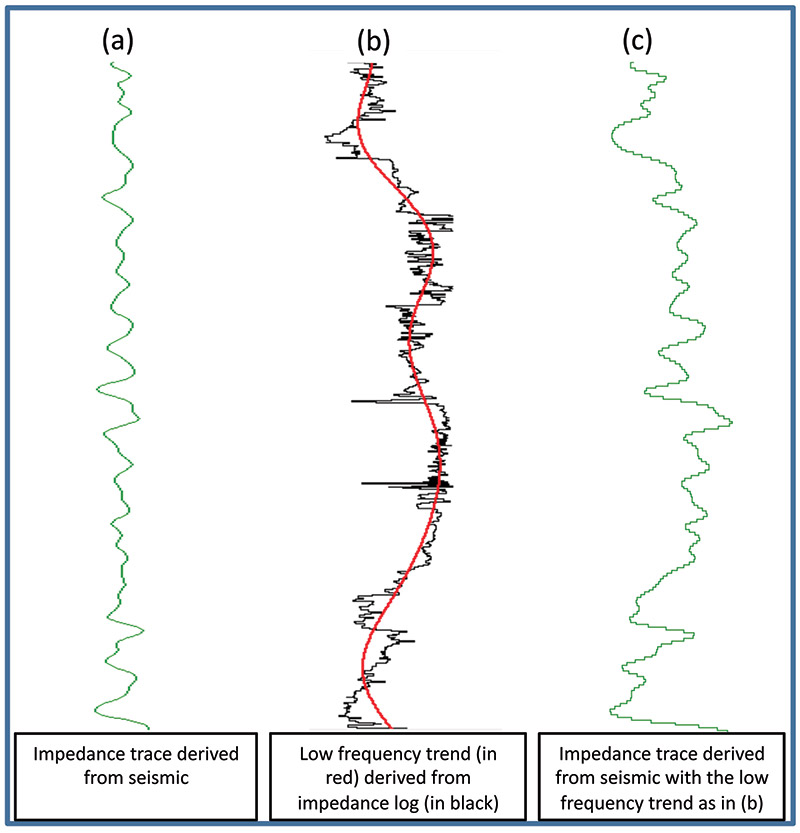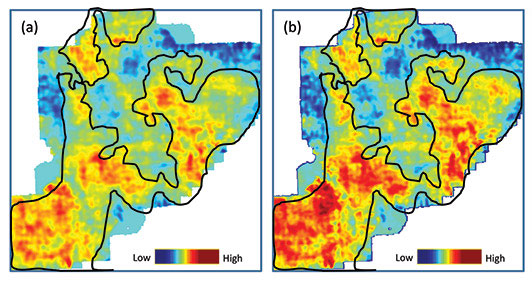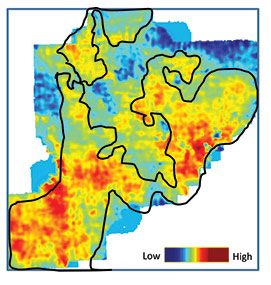![]() Click to view article in PDF format.
Click to view article in PDF format.
GCImpedance Inversion May Help Characterize Reservoir*
Satinder Chopra1and Ritesh Kumar Sharma1
Search and Discovery Article #41099 (2012)
Posted December 17, 2012
*Adapted from the Geophysical Corner column, prepared by the author, in AAPG Explorer, December, 2012, and entitled "A Solid Step Toward Accurate Interpretations". Editor of Geophysical Corner is Satinder Chopra ([email protected]). Managing Editor of AAPG Explorer is Vern Stefanic. AAPG©2012
1 Arcis Corp., Calgary, Canada ([email protected])
In the November 2012 Geophysical Corner we discussed the unsupervised seismic waveform classification method, which provides qualitative information on lithology in terms of facies  variation
variation in a given subsurface target zone. While this information is useful, more work needs to be done for characterizing such formations of interest in terms of porosity and fluid content. For this purpose, impedance inversion of seismic data could be used, which essentially means transforming seismic amplitudes into impedance values. Here we discuss here such impedance characterization of the formations of interest.
in a given subsurface target zone. While this information is useful, more work needs to be done for characterizing such formations of interest in terms of porosity and fluid content. For this purpose, impedance inversion of seismic data could be used, which essentially means transforming seismic amplitudes into impedance values. Here we discuss here such impedance characterization of the formations of interest.
|
|
Seismic signals have a narrow frequency bandwidth, say 8-80 Hz. Frequencies below 8 or 10 Hz are lost either by bandpass filtering circuits in the recording instruments or while processing of seismic data to eliminate the low frequency noise usually present in the data. Sonic logs, on the other hand, have a very broad frequency bandwidth, extending from 0 to well over many kilohertz. While the high frequencies show the high-resolution information on the log, the low frequencies exhibit the basic velocity structure or the subsurface compaction trend. As these low frequencies are not present in the seismic data, the impedance traces derived from the seismic do not exhibit the compaction trend that the impedance logs do. When seismic data are transformed into impedance values, the low frequency trend usually is added from outside - say, from the available impedance logs. By doing so, the derived impedance values will have a range of values similar to the value range exhibited by the impedance log curves. Such a method is termed as absolute acoustic impedance inversion. In Figure 1, the addition of the low-frequency trend is demonstrated to the inverted impedance trace from seismic. Sometimes it is not possible to determine the low frequency trend accurately, which possibly could be due to the unavailability of the log data. In such cases, the derived impedance range will be devoid of the compaction trend, but would still exhibit the relative In the November 2012 Geophysical Corner we discussed the seismic waveform classification method for describing the facies In Figure 2a we show a horizon slice from the relative acoustic impedance volume derived from the input data volume. Within the sand boundary (in black), there are variations in impedance. We also computed the absolute acoustic impedance on the same volume, which is shown in Figure 2b. Though the overall impedance pattern still appears more-or-less the same, there is a significant The May 2008 Geophysical Corner described a thin-bed We derived the Impedance inversion on highly resolved seismic data retrieved in the form of We thank Arcis Seismic Solutions for permission to present this work. |

 General statement
General statement


